A charge of mass 2g (fig.) is free to move then calculate its speed, when is at a distance of b.
[Assume a = 1m, b = 10m, Q = )]
![A charge q = 10^(-6) C of mass 2g (fig.) is free to move then calculate its speed, when is at a distance of b. [Assume a = 1m, b = 10m, Q = 10^(-3)C)]](https://d10lpgp6xz60nq.cloudfront.net/physics_images/MOT_CON_NEET_PHY_C02_E03_027_Q01.png)
90 m/s
9 m/s
900 m/s
none of these
The correct Answer is:A
Step by step video, text & image solution for A charge q = 10^(-6) C of mass 2g (fig.) is free to move then calculate its speed, when is at a distance of b. [Assume a = 1m, b = 10m, Q = 10^(-3)C)] by Physics experts to help you in doubts & scoring excellent marks in Class 12 exams.
Updated on:21/07/2023Topper's Solved these Questions
- ELECTROSTATICSBook:MOTIONChapter:ELECTROSTATICSExercise:Exercise -3 Section (A)
Explore 41 Videos
- ELECTROSTATICSBook:MOTIONChapter:ELECTROSTATICSExercise:Exercise -3 Section (B) Previous Year Problems | JEE Main
Explore 30 Videos
- ELECTROSTATICSBook:MOTIONChapter:ELECTROSTATICSExercise:Exercise -1 (Objective Problems | NEET)
Explore 105 Videos
- ELECTRONICS - SEMI CONDUCTORBook:MOTIONChapter:ELECTRONICS - SEMI CONDUCTORExercise:EXERCISE - 3
Explore 29 Videos
- ELECTROSTATICS - I Book:MOTIONChapter:ELECTROSTATICS - I Exercise:EXERCISE - 4 (Level -II) PREVIOUS YEAR - JEE ADVANCED
Explore 13 Videos
Similar Questions
Two identical circular rings A and B of radius 30 cm are placed coaxially with their axes horizontal in a uniform electric field E.=105N/C directed vertically upward as shown in figure. Distance between centres ofthese rings A and B is40cm. Ring A has a positive charge 10μC while ring B has a negative charge of magnitude 20μC. A particle of mass 100g and carrying a positive charge 10μC is released from rest at the centre of the ring A. Calculate its velocity when it has moved a distanceof40cm. Take g=10m/s2
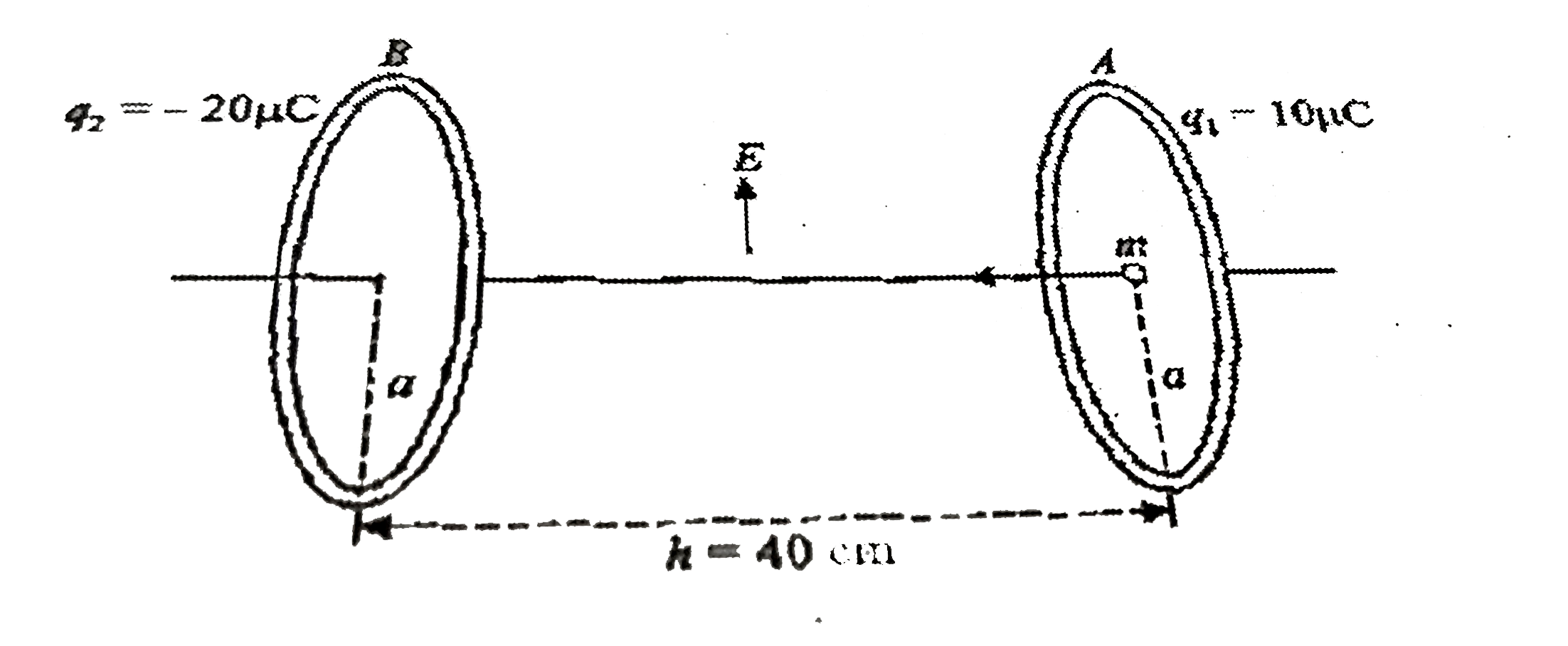
[6√2m/s]
View SolutionAn alpha particle of charge 3.2×10−19C and mass 6.8×10−27Kg is initially moving at speed 107ms when it is at far distance from another fixed point charge 112×10−19C. Find the distance of closest approach.
View Solution
Knowledge Check
Calculate the tension in the thread during equilibrium condition(m=80×10−6kg, q=2×10−8C) -
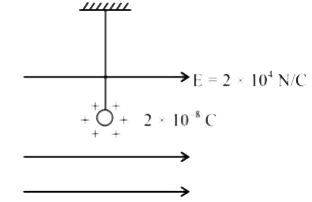 A8.8 NB8.8×102NC8.8×10−4ND8.8×10−3N
A8.8 NB8.8×102NC8.8×10−4ND8.8×10−3NA small metal sphere, carrying a net charge q1=−2μC, is held in a stationary position by insulating supports. A second small metal sphere, with a net charge of q2=−8μC and mass 1.50g, is projected toward q1. When the two spheres are 0.800m apart, q2 is moving toward q1 with speed 20ms−1 as shown in (Fig. 3.151). Assume that the two spheres can be treated as point charges. You can ignore the force of gravity.
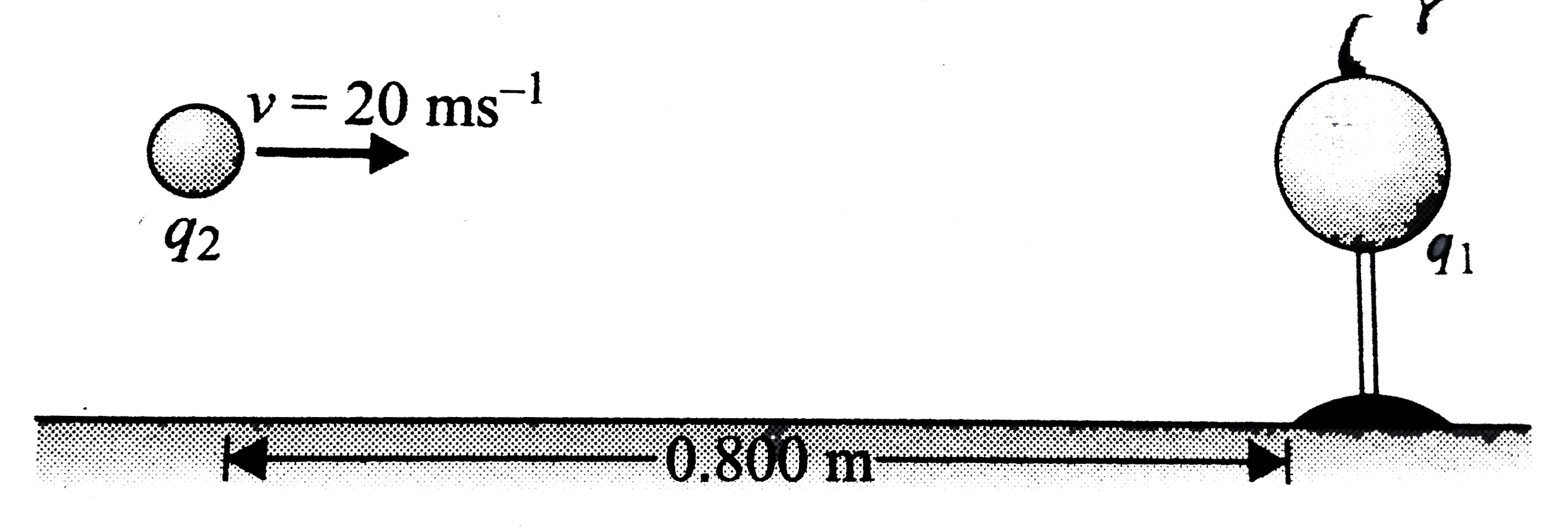 .
.
The speed of q2 when the spheres are 0.400m apart is.A2√10ms−1B2√6ms−1C4√10ms−1D4√6ms−1A small metal sphere, carrying a net charge q1=−2μC, is held in a stationary position by insulating supports. A second small metal sphere, with a net charge of q2=−8μC and mass 1.50g, is projected toward q1. When the two spheres are 0.800m apart, q2 is moving toward q1 with speed 20ms−1 as shown in (Fig. 3.151). Assume that the two spheres can be treated as point charges. You can ignore the force of gravity.
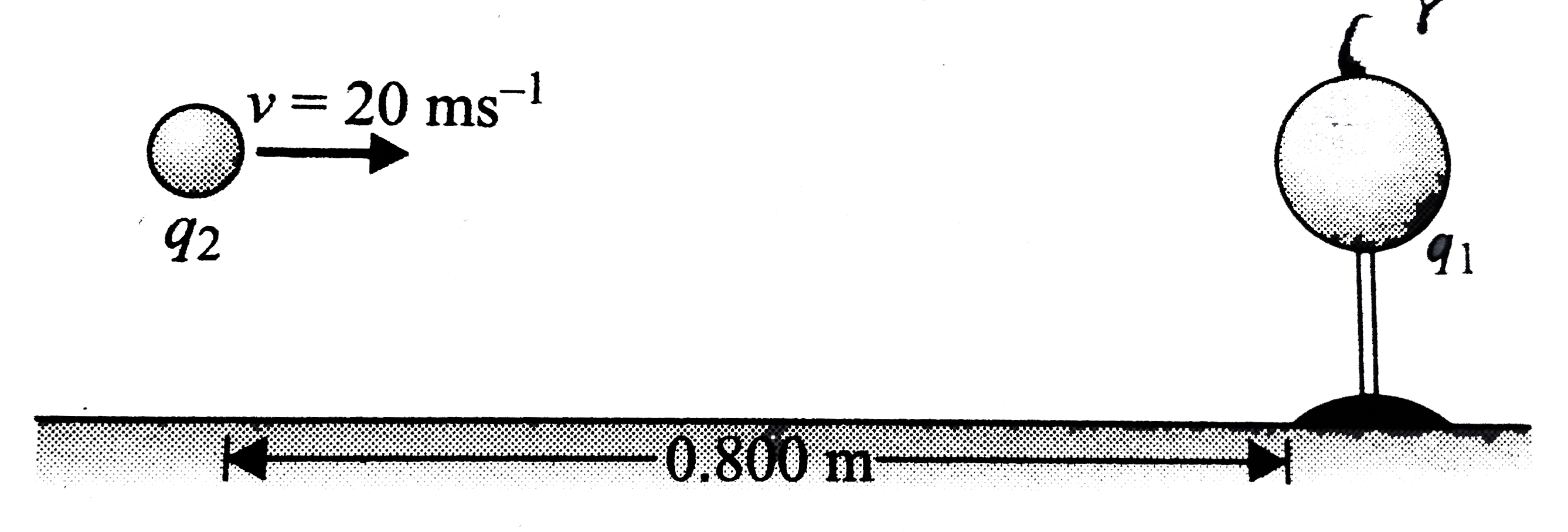 .
.
How close does q2 get to q1 ?A0.20mB0.30mC0.10mD0.15m
Two point charges q1andq2, of magnitude +10–8Cand–10–8C, respectively, are placed 0.1 m apart. Calculate the electric fields at points A, B and C shown in Fig. 1.14.
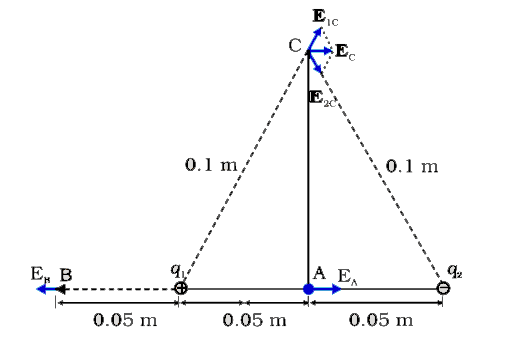
View SolutionThe length of a rod is exactly 1 m when measured at rest . What will be its length when it moves at a speed of (a) 3×105ms−1 (b) 3×106ms−1 and ( c) 3×107ms−1 ?
View SolutionTwo point charges, q1=10×10−8Candq2=−2×10−8C, are separated by a distance of 60 cm in air.
Find at what distance from the 1st charge q1, would the electric potential be zero.
View SolutionCalculate the angular speed of againt wheel of radius 10 m, moving with a speed of 10m/s.
View SolutionThere is a uniform electric field of strength 103V/m along y-axis. A body of mass 1g and charge 10−6C is projected into the field from origin along the positive x-axis with a velocity 10m/s. Its speed in m/s after 10s is (Neglect gravitation)
View Solution